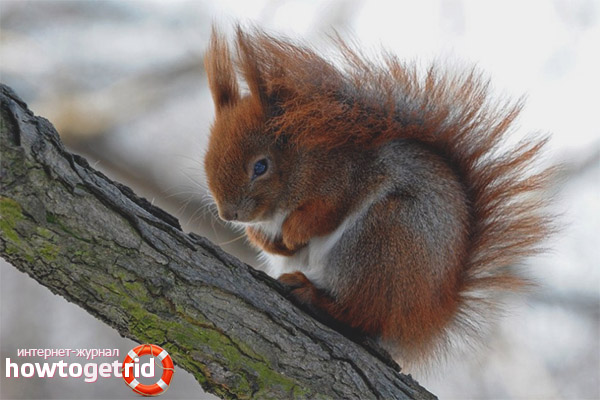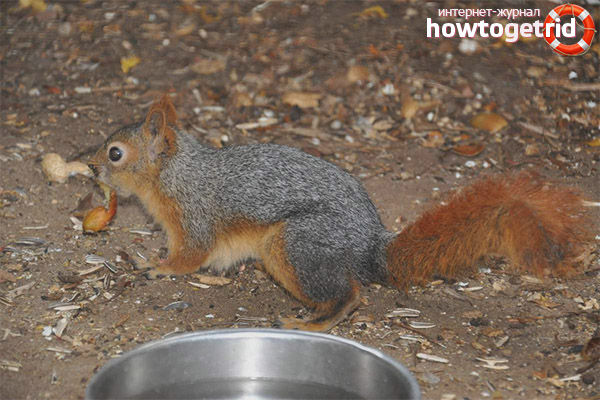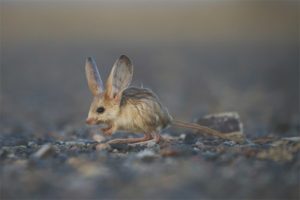The content of the article
The Caucasian, or as it is otherwise called, Persian squirrel, a mammal, a relative of the common squirrel, belongs to the order of rodents, the squirrel family, and the genus of squirrel. She does not have a small pre-rooted tooth, for which she received an interesting name, translated from Latin, meaning "abnormal protein." Due to the coarse fur and the relatively small population, the commercial value for humans is not.
Description
The appearance of the animal is no different from an ordinary relative. The difference is its small size and short coat. In length, her body reaches 25.5 cm, the total weight is up to 430 grams. Fluffy tail, short ears without tassels at the ends. Their length is only 2-3 cm. At first glance, the distinctive features of the Persian squirrel from the usual one are the presence of five, and sometimes six corns on its paws, in comparison with the four usual corns of an ordinary individual. Ten nipples located on the chest also distinguish it from an ordinary squirrel, which has only eight.
The color is relatively uniform, mainly gray-brown, ranging from brown-chestnut in color on the sides to blackish-brown ripples on the back. The abdomen is a juicy orange, sometimes pure white. The hair color of the tail is chestnut, it can be rusty, light brownish. At the end of the tail, the hair is longer, two-tone: from a black-brown shade at the base to a bright reddish one at the tip. In winter, the color of the Persian squirrel does not change, it only slightly darkens on the back and lightens on the abdomen. Persian squirrel shedding occurs twice a year: in mid-spring and early fall.
The shape of the muzzle is oval, slightly elongated. Small eyes peek out from beneath a flat forehead. On the front paws in the indentation between the fingers and the pads there are sweat glands, which play an important role for the mark as the property of the area chosen for living. The sense of smell in a Persian animal is very developed, it makes it possible to easily determine food located underground or in snow. The squirrel's voice is sharp, well distinguishable, similar to a metal rattle “cheat-cheat”. Life expectancy is about 12 years.
Habitat
The animal lives in the modern world mainly in the territories of the countries of the Middle East and the Caucasus isthmus. You can meet him in Asia Minor, Iran, the territories of Transcaucasia, islands adjacent to the Aegean Sea.
As a convenient area for life, the Caucasian squirrel chooses mixed forests with oak, chestnut and walnut trees growing there. An area unsuitable for living with high grass cover and tall overgrown oak trees. In a lean year, she leaves the coniferous forests because of the habitat of the common squirrel in them and the lack of food for living together with them.
Lifestyle

An individual can live both independently, in complete solitude, and in pairs. He is active in the afternoon, from early morning until late in the evening, without feeling tired.Caucasian squirrel jumping, easily overcomes the distance from branch to branch up to 5 meters long. Moving by jumping in trees, it can often go down to the ground, if necessary, and cross the territory. But still prefers a woody lifestyle. It does not migrate; it leaves its habitat for short distances in search of food.
Danger for squirrels is represented by such animals as weasel and marten, destroying newborn babies. In the event of imminent danger, the animal chooses the tactics of fading in one place, clinging to a tree and hiding behind its trunk or crown of leaves. Man poses a danger to the Caucasian squirrel as a destroyer of its natural habitat, cutting down and gradually nullifying the forests where it predominates.
Swims in the water without hunting, does not hibernate in winter. The rodent lives in the hollow of a tree at a height of up to 14 meters from the surface of the earth or in the voids formed between the plexus of roots. For greater security, the place of residence is equipped with several entrances and exits at once. The nest is laid out in three layers: the first in the form of whole dry leaves of maple, linden or oak, the second layer is made up of crushed leaves of the same trees, and the top one is lined with moss and fresh leaves. Persian squirrel does not build external nests, only hides them inside a tree.
Nutrition
The daily diet of proteins varies depending on seasonality and consists mainly of nuts, chestnuts, various fruits and berries, emerging buds, young plant sprouts, mushrooms, seeds of cedar trees. From the juicy fleshy fruits, the nucleolus extracts the protein, which gives it the greatest value, the pulp of the fruit does not interest her particularly.
In addition to plant foods, the Caucasian squirrel can occasionally dilute its menu with animal foods: bird eggs, lizards and other invertebrates, chicks and various insects. Like ordinary, Persian squirrel stores food for the winter, hiding it in the basal thickets of the tree. Her stocks with pleasure feed on others, accidentally finding their rodents.
On the whole, the choice of the specific nutrition of the Persian individual directly depends on the time of the year: in autumn and winter these are tree seeds and edible reserves prepared for the winter, in spring and summer, I write mainly on plant and animal food.
Breeding
Taming
Taming a Caucasian squirrel is very difficult because of its timidity. In captivity, its maintenance is possible, but it rarely takes root, even at a young age. To provide the most favorable conditions for her living and breeding in captivity, you can provide her with a spacious aviary. At the same time, the walls and ceiling of the enclosure should be covered with metal mesh, otherwise the squirrel will not linger there for a second. To ensure offspring, only one pair of individuals, strong, healthy and accustomed to each other, can be kept in the aviary. A greater number of proteins will not create the necessary peace and solitude required to create offspring.
Video: Interesting Facts About Proteins










Submit